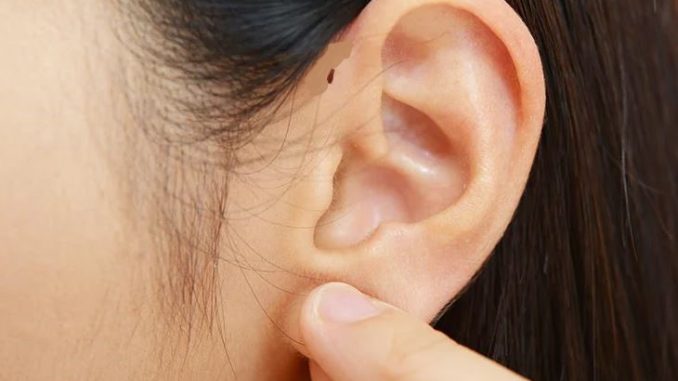
The human body is a canvas of marvels, each individual trait holding its own unique story. One such intriguing characteristic is the presence of a small hole above the ear, often referred to as a preauricular sinus. This seemingly insignificant feature has captured the curiosity of many, leading to speculation about its origins and implications. In this article, we’ll delve into the mystery behind the tiny hole above your ear and explore what it might signify.
1. The Preauricular Sinus: A Singular Trait
The preauricular sinus, characterized by a small pit or hole located just in front of the ear, is a congenital condition. This means that individuals are born with this trait, which can be present on one or both sides of the head. These pits can vary in size and depth, and they might be more prominent in some individuals than in others.
2. Evolutionary Remnants
The presence of preauricular sinuses has sparked discussions about our evolutionary history. Some researchers propose that these tiny holes are remnants of gill slits, vestiges of our aquatic ancestors. These gill-like structures existed millions of years ago and aided in respiration underwater. While humans have long evolved beyond such requirements, the persistence of preauricular sinuses could be attributed to the complexity of genetic inheritance.
3. Genetics and Inheritance
The inheritance of preauricular sinuses is often influenced by genetics. If one or both parents have this trait, their children might inherit it as well. However, the inheritance pattern is not always straightforward, and individuals with no family history of preauricular sinuses can still possess them due to the interplay of various genetic factors.
4. Occurrence and Prevalence
Preauricular sinuses are relatively rare, with prevalence rates varying across different populations. These rates can range from as low as 0.1% to about 0.9%, indicating that this trait is not commonly found in the general population.
5. Health Implications
For most individuals, preauricular sinuses are harmless and do not cause any health issues. However, there are cases where these pits can become infected due to the accumulation of debris or bacteria. In such instances, the sinus can become inflamed, leading to pain and discharge. If you notice any signs of infection, it’s essential to seek medical attention for proper evaluation and treatment.
6. Surgical Intervention
In cases where preauricular sinuses become recurrently infected or cause discomfort, medical professionals might recommend surgical removal. The procedure, known as excision, involves removing the sinus and then closing the opening to prevent future infections.
7. Diversity and Identity
Just as every individual has a distinct fingerprint, the presence of preauricular sinuses adds to the rich tapestry of human diversity. These tiny holes, although often overlooked, contribute to the uniqueness that defines each person.
8. Cultural Significance
In certain cultures, preauricular sinuses are associated with specific beliefs or superstitions. Some societies view them as a sign of luck, while others tie them to special abilities or even spiritual significance. These interpretations can vary widely, highlighting the cultural diversity that shapes our perceptions of the world.
Conclusion
The tiny hole above the ear, known as the preauricular sinus, offers a fascinating glimpse into the complexity of human biology, genetics, and evolution. As we navigate the mysteries of our origins, it’s important to embrace the diversity of traits that make each person uniquely themselves. Whether you see your preauricular sinus as a link to ancient history, a genetic marker, or a simple part of your individuality, it’s a reminder of the intricate story that every human body carries within.
Share this:
- Click to share on Facebook (Opens in new window)
- Click to share on Twitter (Opens in new window)
- Click to share on WhatsApp (Opens in new window)
- Click to share on Reddit (Opens in new window)
- Click to share on Telegram (Opens in new window)
- Click to share on Pinterest (Opens in new window)
- Click to share on LinkedIn (Opens in new window)